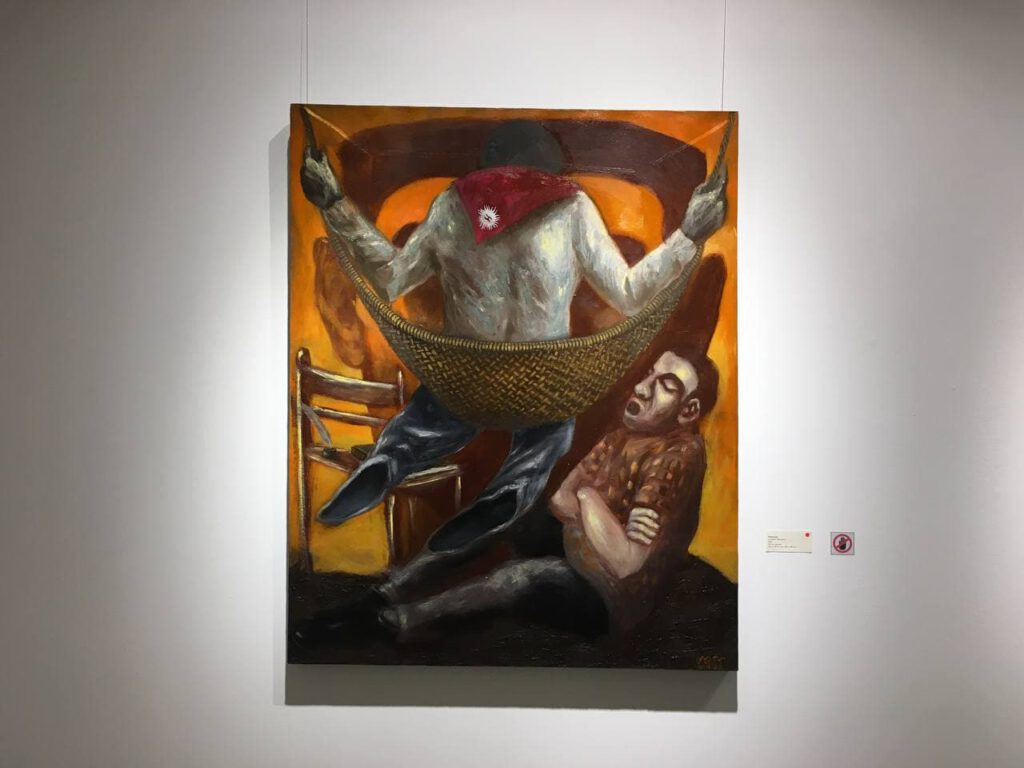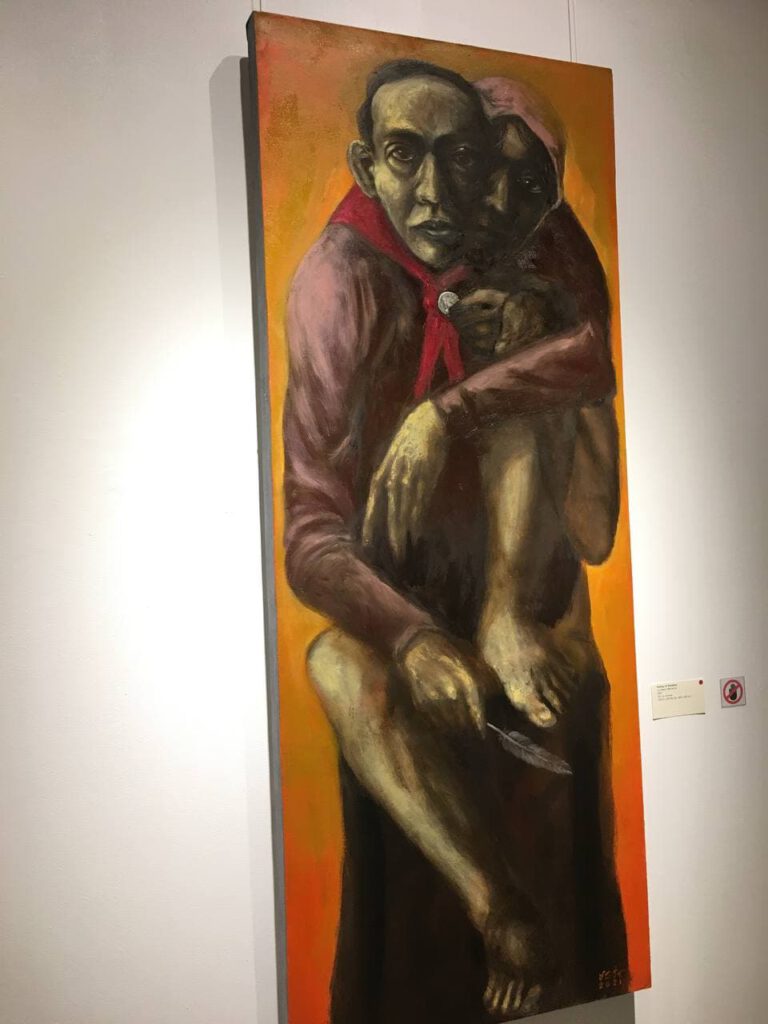“True honor is attained by teaching our minds to recognize truth, and training our hearts to love it”—Apolinario Mabini
While some people in power try to alter and distort historical events, revisiting the past with factual knowledge in mind is as important as living the present.
To celebrate the mind and bravery of Apolinario Mabini, the Linangan Art Residency launched the “Duyan ng Magiting” exhibition, along with six other artists namely: Lorebert Maralita, Lance Gomez, Telle De Leon, Kirk Tabanera, Jason Delgado, and Sarah Conanan who contributed their work to the cause.
“Reconnecting the past and present by tracing the gallery’s namesake to the exhibition space the show Duyan ng Magiting draws parallels and lessons from Mabini’s role in the Philippine revolution and the First Republic to the current state of our nation,” Alee Garibay of the Linangan Art Residency.
As I carefully roamed the exhibit, examining every corner and nook of the seemingly overwhelming ocean that is the room of vibrant art pieces elevating against the white wall, my eyes cannot help but fixate themselves on the canvas starring a feverish man on a hammock carried by two people.
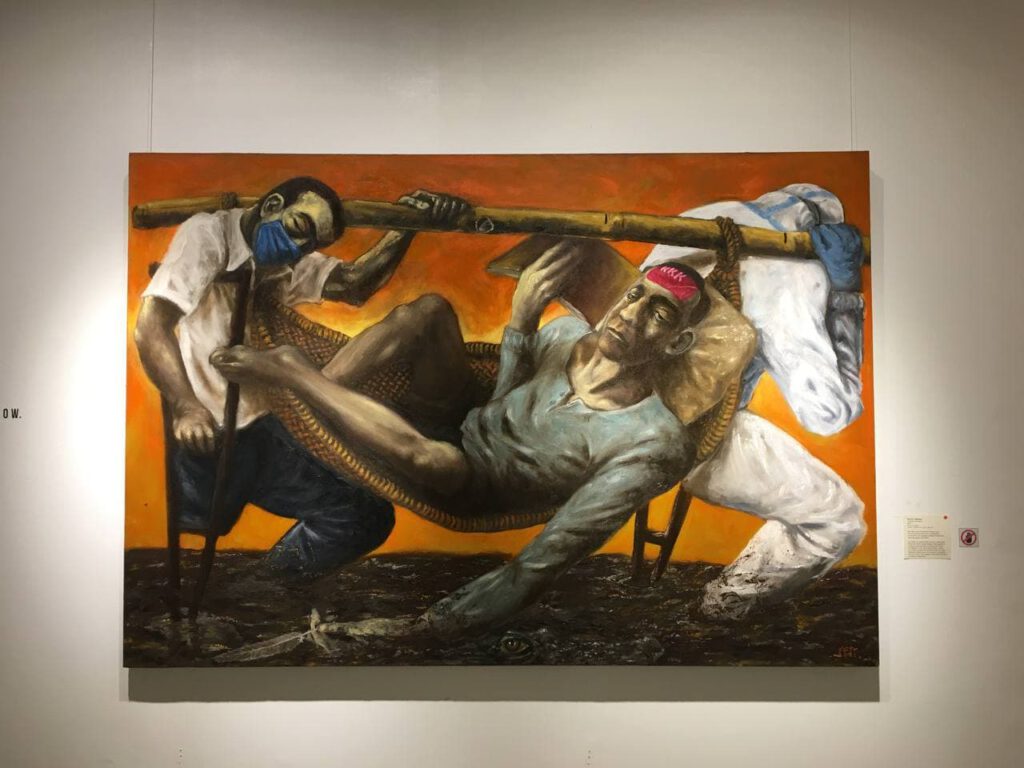
At a first glance, one might think that this man with a KKK bandana on his forehead is Apolinario Mabini (well, at least for me). No doubt, this is Mabini, since the exhibit is about the brain of revolution himself, hence the “Duyan ng Magiting”, right?
But as I meticulously approached the man in the canvas, something bugged my mind—this is not the same Apolinario that I often see in the history textbooks. To end this predicament, I rushed to the small piece of paper glued to the wall containing information about the artwork. I gasped. The man on the painting that I thought was Apolinario Mabini is actually the current president of the administration; President Rodrigo Duterte with his infamous large nose—the very detail that gave away the surprise.
Before I even finish the whole text, my two eyes instinctively rummage once again through the entirety of the piece. The two men on the two corners of the painting are not just background pieces and they are unforgivable to miss as they tell their own story which makes this artwork a brilliant piece.
Lorebert Maralita, the artist behind this painting he called “Mabini’t Mabinat” featured a sick President Duterte in a hammock carried by a medical front-liner wearing a full PPE and a handicapped man with a wooden crutch, all contrasted in his famous orange gradient backdrop.
He painted President Duterte reading an upside-down book in one hand while his other hand is losing grip of a feather pen and is resting on a crocodile in rising floodwaters.
The art piece depicts what would happen in our country if an incompetent leader did not study the lessons from our history.
“Unless our leaders study the lessons from our past, mabibinat lang tayo; our country’s condition will be a recurring sickness that will continue to keep us impotent,” Maralita warned.
While I am strolling around the gallery, I noticed he also displayed other paintings of Mabini as his subject—“Gabay ni Katabay” and “Paminawa”, a Bisaya word which translates to listen or hear, pictures Apolinario Mabini sitting on a hammock in front of a sleeping Pres. Duterte.
I also stumbled upon Kirk Tabanera’s “Pimp Goblins” which took a satirical approach to call out how we often disregard historical context in present situations.
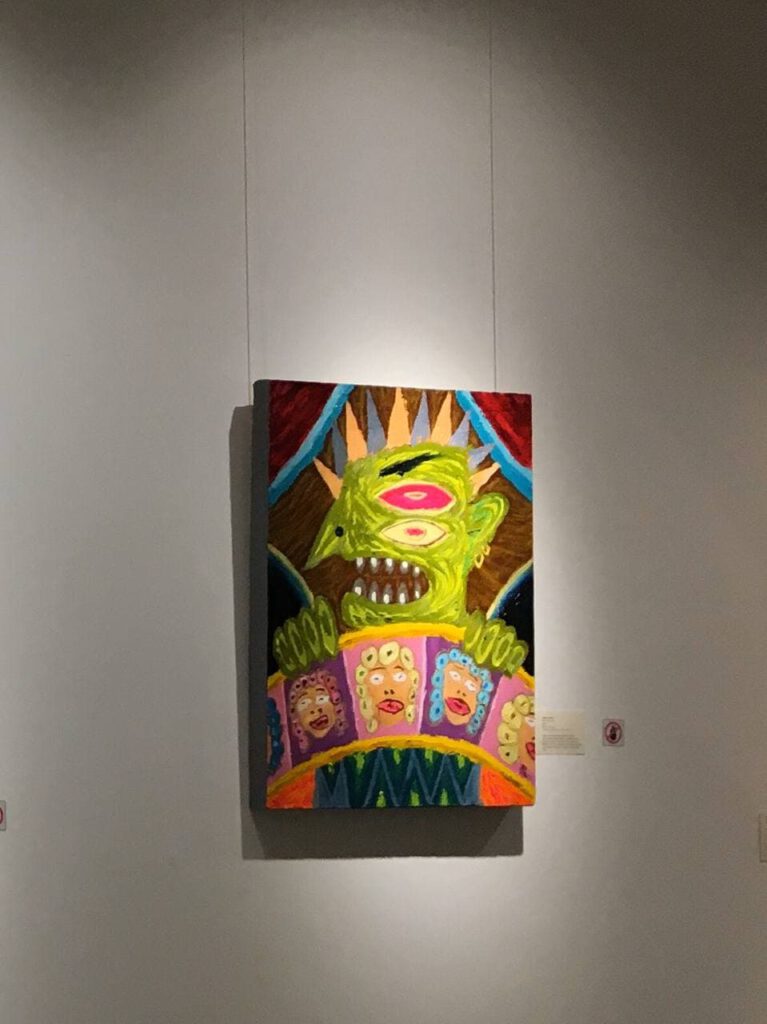
The vibrant piece starring a red-eyed green goblin is a remark on the government plan on naming a Manila red light district (urban area consisting of clubs/bars and sex-oriented businesses) after Apolinario Mabini who practiced celibate.
My eyes and feet continued to wander, encircling the wholeness of the room. A thought comes to my mind: “What would happen if the Philippines truly won the war against US Forces”.
Maybe we can learn a thing or two from one of the greatest intellectuals in Philippine history, Apolinario Mabini.
To conclude here is Kabanera’s “The Paralytic behind the Curtain” which shows Emilio Aguinaldo as a melting figure of wax and above him is Mabini with his piercing eyes and lips.
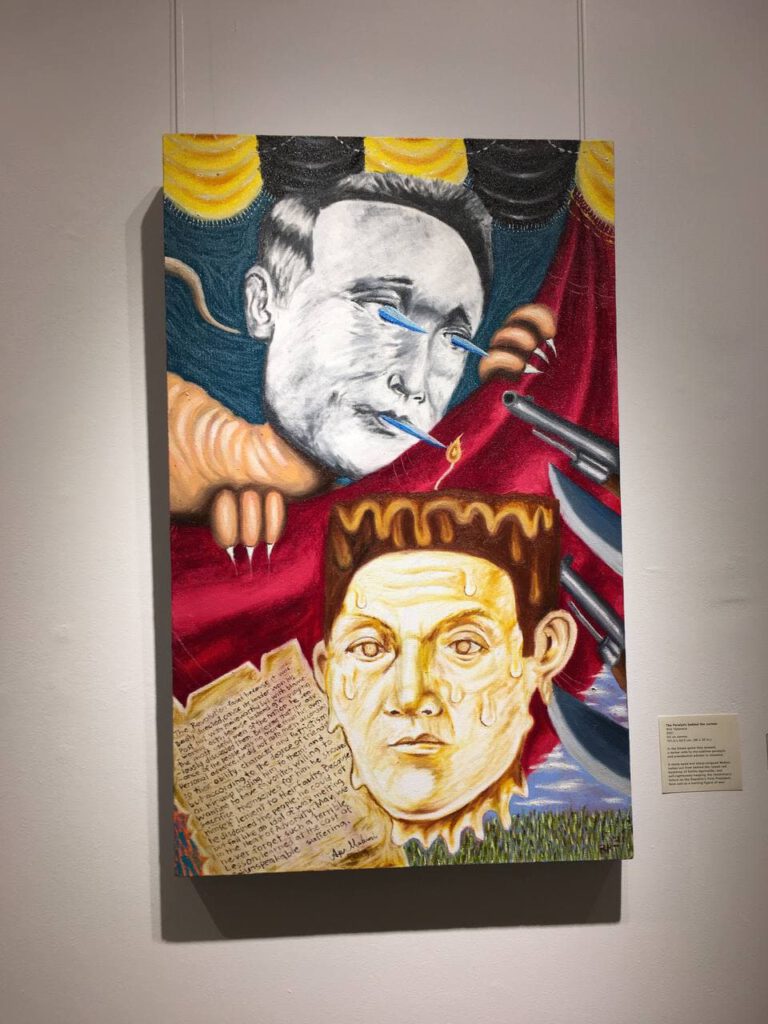
“…the Revolution failed because it was badly led; because its leader won his post by reprehensible rather than meritorious acts; “…the Revolution failed because it was badly led; because its leader won his post by reprehensible rather than meritorious acts; because instead of supporting the men most useful to the people, he made them useless out of jealousy… Because he thus neglected the people forsook him; and forsaken by the people, he was bound to fall like a waxen idol melting in the heat of adversity. God grant we do not forget such a terrible lesson, learnt at the cost of untold suffering,” said Mabini on the failure of the Filipino revolution.



























